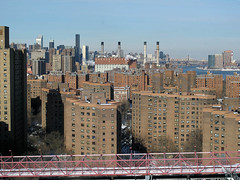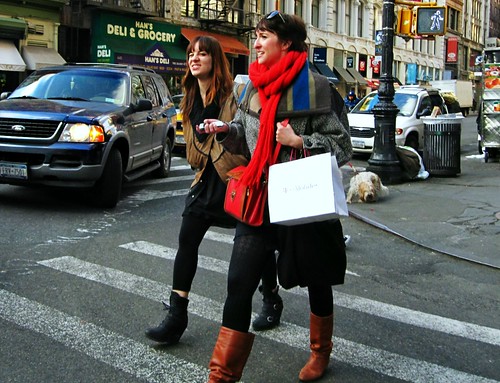 Joel Raskin
Joel RaskinLess than a week after 12-year-old Dashane Santana was killed crossing Delancey Street, a new report finds that intersections near public housing complexes are by far the most dangerous for children.
In the East Village, Lower East Side and Chinatown, “a person struck by a car is nearly two times more likely to be a child than a crash victim on the Upper East Side,” according to the new report released by the advocacy group Transportation Alternatives. The data, culled from statistics from the state Division of Motor Vehicles from 1995 to 2009, also highlights intersections on East Houston Street and Delancey Street as high-crash areas.
According to the figures, Ms. Santana, a resident of the Jacob Riis Houses, was disproportionately exposed to dangerous intersections on the east side compared to her peers in other parts of the city. Read more…
For those locals who took a quick glance at accident statistics for New York City compiled by Transportation Alternatives, it probably came as little surprise that the East Village is home to two of the city’s most perilous intersections.
The intersection of Third Avenue and East 14th Street tied for the fifth most dangerous intersection in Manhattan with 66 crashes involving pedestrians from 1995 to 2005.
Bowery and West Houston Street tied for the most dangerous intersection in the entire city with 29 crashes involving cyclists.
Now that Transportation Alternatives has unveiled a plan that it believes will help make streets safer, The Local decided to pay a visit to 14th Street between Second and Third Avenues to talk to residents and business owners about the area’s dubious place as one of the city’s most treacherous stretches of asphalt.
NYU Journalism’s Claire Glass reports.
 Michelle Rick
Michelle RickIf you had to identify one defining feature of life in Manhattan, it just might be pedestrianism. There are places where calling someone or something “pedestrian” is an insult; this isn’t one of them. Here, “pedestrian” is an identity to share and be proud of. It does occasionally need defending.
Only a minority of us have cars, but every New Yorker walks and lives near things worth walking to (no matter how often we also take taxis or Zipcars or anything else). Our street grid, formed by the 1811 Commissioners’ Plan, predates the automotive invasion of American space by nearly a century. We’re the pre-automotive Americans, by design and by history as well as by inclination. And if factors like climate change, oil shortages, energy costs, Middle Eastern warfare, and rising awareness of what cars do to human bodies all suggest that the automotive era won’t last forever, we’re ready for post-automotive life, too.
On the East Side, the human/vehicular competition is particularly intense, and with the tire tracks on people’s backs to prove it, a coalition of community groups led by the nonprofit group Transportation Alternatives (along with the East Village Community Coalition, East Harlem Preservation, Civitas, Upper Green Side, and others) has developed an East Side Action Plan to define goals for the improvement of street safety involving multiple city agencies. The East Side, particularly the East Village, is a logical place for this: the area from Chinatown up to East Harlem accounts for only 8 percent of the city’s population but 22 percent of its pedestrian commuters, 13 percent of its bike commuters – and 11 percent of its “fatal and injurious” crashes.
Read more…





